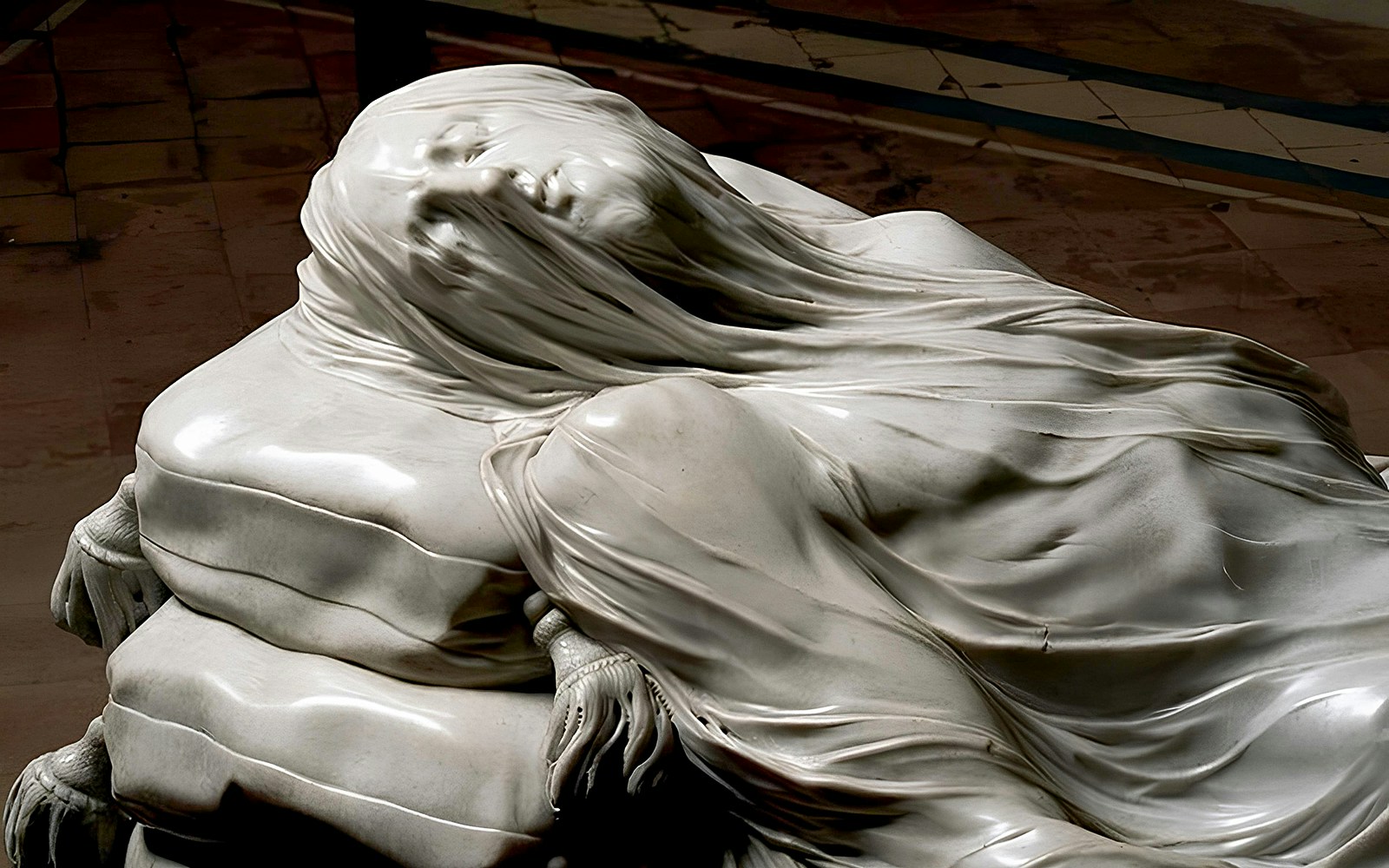How to view the Veiled Christ best?
The Veiled Christ is a jaw-dropping masterpiece that deserves careful observation to fully appreciate its artistry and emotional depth. Here’s how to make the most of your visit:
Walk around the sculpture to admire its intricate details from all perspectives. From above, notice the lifelike proportions of Christ’s body, the delicate folds of the marble veil, and the instruments of Passion at his feet. Each angle reveals new layers of craftsmanship, such as the swollen vein on Christ’s forehead and the serene expression on his face.
Pay close attention to the marble veil, which appears so transparent and delicate that it seems real. Observe how it clings to Christ’s form, revealing every contour of his body while symbolizing purity and sacrifice.
Sansevero Chapel’s lighting enhances the sculpture’s dramatic effect. Soft light highlights the intricate details of the veil and Christ’s body, creating shadows that add depth and realism. Visit during quieter hours (early morning or midday) for an uninterrupted view of this interplay between light and marble.
Allocate at least 20–30 minutes to study the sculpture closely. The more time you spend observing, the more details you’ll notice, from Christ’s facial expression to the symbolic objects at his feet. Let yourself be immersed in its emotional and spiritual power.
- Enhance your experience with a guide
Consider taking a guided tour or using an audio guide to learn about the history, symbolism, and legends surrounding the Veiled Christ. These insights will deepen your appreciation of this extraordinary work of art.


